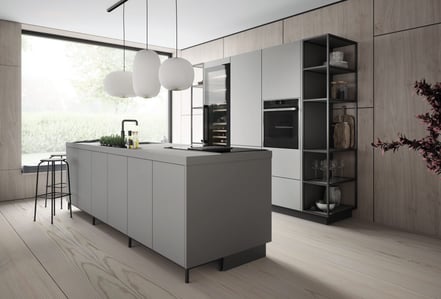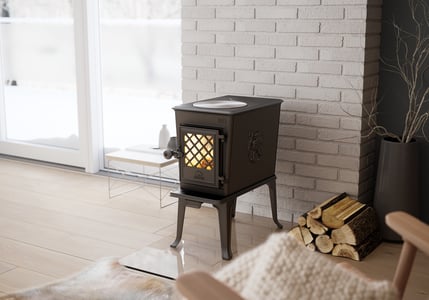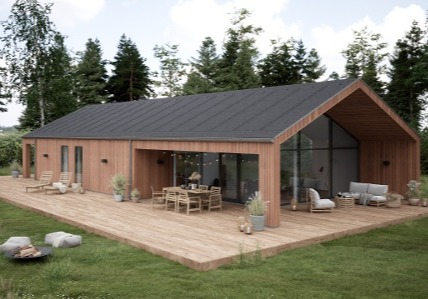In-store retail isn't fading—it's transforming. So, if you want to stay relevant, you must also transform. With online shopping offering endless options and instant convenience, your store needs to offer something digital can't: a memorable, immersive experience.
How?
Interactive tools that blend the best of both worlds.
Get ready to learn more about:
- How to provide the best possible in-store customer experience with a product configurator
- Bring products to life in your store with augmented reality
- Let customers touch, feel, and click: The power of combining physical and digital
One standout solution is the product configurator we already know and love from websites. But who's to say you cannot add an interactive digital tool to your store to create a seamless connection between these two shopping experiences? Here, it can empower customers to personalize everything—from color and material to size and features. Add tactile elements or even augmented reality (AR), and you have a tool that guides purchasing decisions and turns shopping into an experience worth talking about.
Because, it's no secret that customers expect personalization. Online, they want to click and customize. But when it comes to big-ticket purchases—say, a custom kitchen—they still crave that in-person reassurance. Seeing materials up close, getting expert guidance, and making final tweaks on-site builds trust and confidence.

Customers can start their journey online with an intuitive, self-guided tool. They can explore and customize their choices at their own pace, creating a preference for your brand and products. Then, carry that experience into the store. Let them pick up where they left off, this time with added physical interaction and real-time support from a knowledgeable specialist—maybe even a more advanced version of the tool.
How to provide the best possible in-store customer experience with a product configurator
A product configurator can be a game-changer in your store—but only if it's done right. The goal isn't just to show off tech for tech's sake. The goal is to enhance the customer journey, making complex purchases effortless and engaging. Get it wrong, and instead of excitement, you'll leave customers confused and unsure about your brand's expertise.
Here's how to make sure your in-store configurator delivers real value:
1. Keep it simple and intuitive
First impressions count. Your configurator should be user-friendly and visually appealing, guiding customers through the customization process step by step. A cluttered or overly technical interface will only create friction. Think smooth navigation, clear options, and visual feedback that helps customers feel in control.
Try Vedum's kitchen configurator for yourself.
2. Empower your sellers to shine
Of course, technology is essential, but it shouldn't replace human connection altogether—it should enhance it. Train your in-store employees so they know as much about the configurator as they do about your products themselves. When they can confidently walk customers through the tool, answer questions, and offer recommendations, the configurator becomes a shared experience—not a solo challenge.
3. Design a dedicated interactive area
Make a dedicated interactive area within your store designed to captivate customers and make them want to use your customization tool. Use display screens, physical samples, and clear signage to help your customers get started, and add visualizations of possible designs for inspiration. This area will act as the perfect space for the in-store experts to guide and answer questions that might arise.
Bring products to life in your store with augmented reality
There are many different ways to design an in-store product configurator. What matters is what will most benefit your customers and heighten their shopping experience.
Consider incorporating an augmented reality (AR) feature into your solution. AR elevates customer engagement because it enables users to personalize their perfect product in a captivating virtual environment before experiencing it in the real world. With AR, customers can use a smartphone or tablet to project a life-sized 3D model of their customized product into their physical environment. Whether it's a piece of furniture or a kitchen layout on your showroom floor, they can see exactly how it will look in real life.
You can also add AR functionality to your online configurator, letting the user see if your product will fit perfectly in their home. No guesswork. No surprises.
Read about how RAIS has integrated an AR solution in their product configurator.
This level of visualization gives customers confidence in their choices and brings a real sense of ownership to the experience. They're not just picking from a list—they're interacting with a version of the product that feels uniquely theirs.
Plus, AR adds an element of discovery and delight to the shopping journey. It invites customers to play, explore, and experiment with different configurations—all while building a stronger emotional connection to your brand.
Let customers touch, feel, and click: The power of combining physical and digital
Digital tools are great, but when it comes to in-store experiences, nothing beats the feel of real materials. That's why the most impactful product configurators don't live on a screen alone; they're paired with physical samples your customers can touch, hold, and compare. Let's call it a hybrid product configurator.
Imagine this: a customer customizes a sofa on your configurator, choosing fabric, color, and leg style. At the same time, they're running their hands across fabric swatches, checking how the textures feel, and holding wood samples up to the light. Now, imagine the same thing for a kitchen, bathroom, terrace, garden shed, you name it. It's a full-sensory experience that deepens their confidence and helps them picture the final product in their home.
This method creates an even more immersive shopping experience by allowing customers to touch and feel the materials, observe their colors, and assess their quality. It strengthens the emotional bond between the customer and the product. When people can engage with real materials while exploring digital configurations, they feel more in control, more inspired, and more certain about their choices.
To take it even further, embed QR codes or NFC chips into your physical samples. A quick scan can trigger a response in the configurator—automatically switching materials on-screen, showing alternate styles, or revealing real-time visuals of how the selection transforms the design. It's seamless, smart, and genuinely helpful.
NB: It says "kitchen manufacturers" in the video below, but there are no limits. This solution is also perfect for customizable furniture or building materials.
By blending the physical with the digital, you're not just showing products but creating experiences. And that's what makes your store stand out and makes your customers want to visit even though it's more convenient to shop from home.
Want to bring your in-store experience to life with a product configurator that wows your customers? Let's talk—we're here to help you design a solution that fits your brand, store, retailers, and shoppers.
















